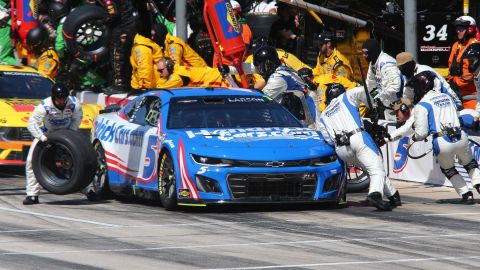Although the introduction of cockpit “halos” undoubtedly will reduce the risk of head injuries for Formula One drivers, it also will increase their risk of injury in certain situations.
As a result of its decision to approve the implementation of the halo in 2018, the FIA reportedly will increase the minimum cockpit evacuation by as much as 100 percent, according to Auto Motor und Sport reporter Tobi Gruner. Drivers currently are required to be capable of unbuckling and exiting their cars in 5 seconds, but that limit could be upward of 10 seconds with the halo.
The FIA has the evacuation time rule in place to ensure that pilots are prepared to take immediate action in the event of a fire. Once as a car stops moving, thus no longer has air flowing over its body, flames can progress very quickly, as Sahara Force India’s Esteban Ocon accidentally demonstrated on a recent ride along.
With that in mind, it will be hard for the FIA to justify pushing the halo through on the grounds of safety, after nine of the 10 teams reportedly voted against it. There’s no sense in deeming something necessary to increase driver safety if it also decreases it in other respects.
Thumbnail photo via Red Bull Racing



